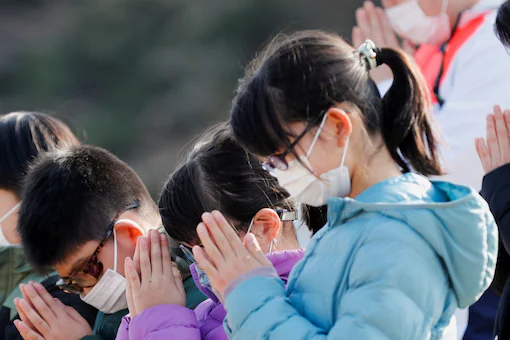Japanese Schools Ban Ponytails Claiming It “Sexually Excites” Male Students
Japan is an advanced and modern country, but it still respects and holds its old traditions. The major leading political party of the government is also known to be more than just a little conservative. Thus arise some absurd rules and restrictions.
One of the most criticized restrictions consists of routine checking of students’ socks, the color of their underwear, and their hair. Recently, a specific restriction has made headlines in which school girls aren’t allowed to tie their hair in ponytails, with the reason being the exposed nape could “sexually excite” male students.

Motoki Sugiyama, a former teacher in middle school, stated that a school administrator informed him that girls should not have a ponytail as the necks they expose can “sexually stimulate” boys.
There aren’t any statistics nationwide on the number of schools that have a ban on ponytails; however, a survey from 2020 indicates that one-in-ten schools within the south region of Fukuoka prohibit that hairstyle.
Sugiyama was a teacher at five schools over 11 years in the Shizuoka prefecture, located about 90 miles to the southwest of Tokyo, and all of them banned ponytails. In addition, he has set out on a personal mission to uncover the absurd demands placed on students. He is part of the growing demand for schools to remove outdated or outright discriminatory rules or hinder a child’s expression.
In June, the outcry of parents and students about these rules led the Japanese government to call on the prefectural education boards to review the draconian laws for schools.
Some schools have actually altered their policies; however, many of the practices that have been in place for decades have not been able to be eliminated.
A ban on ponytails is only one of the many strict rules, referred to as buraku kosoku. Many restrictions also determine the color of the students’ underwear and socks, the length of skirts, and the shape of the eyebrow. The color of hair is another controversial issue. Schools require photographic proof of the student’s natural hair color, even if it’s not entirely ” black and straight.”
Sugiyama uses TikTok to inform the general public about Japan’s educational system, and buraku kosoku claimed that students are not often given a reason for these regulations.
Most of the time, the motives behind the rules were not based on any logic. For instance, schools that do not allow ponytails usually allow bob haircuts which expose as much on the neck area as ponytails can.
However, it was to stop the domino effect that can occur from wild hairstyles at other times. The undercut, which cuts the sides but still leaves the top long, is also prohibited.
“Because when you think that the 2-block (undercut) is acceptable and some students are tempted to suggest that the mohawk must be acceptable,” Sugiyama explained.
Buraku Kosoku is a tradition dating back to the 1870s when the Japanese government established the first regulation system for education.
Through the 70s and the 1980s, rules became increasingly strict about curbing violence and bullying in schools.
The exact rules for what is banned differs between schools and generation to generation; however, the result is the same: no one is particularly notable, said Asao Naito, assistant professor in sociology at Meiji University.
Many schools don’t pay attention to notices that aren’t legally binding and don’t carry penalties. However, some schools took notice. Pigtails and ponytails are not allowed, but underwear for girls doesn’t need to be white any longer. It could be black, gray or navy blue.
Source: VICE
Also read about Japanese Education Board Finally Bans Schools From Checking Students Underwear
